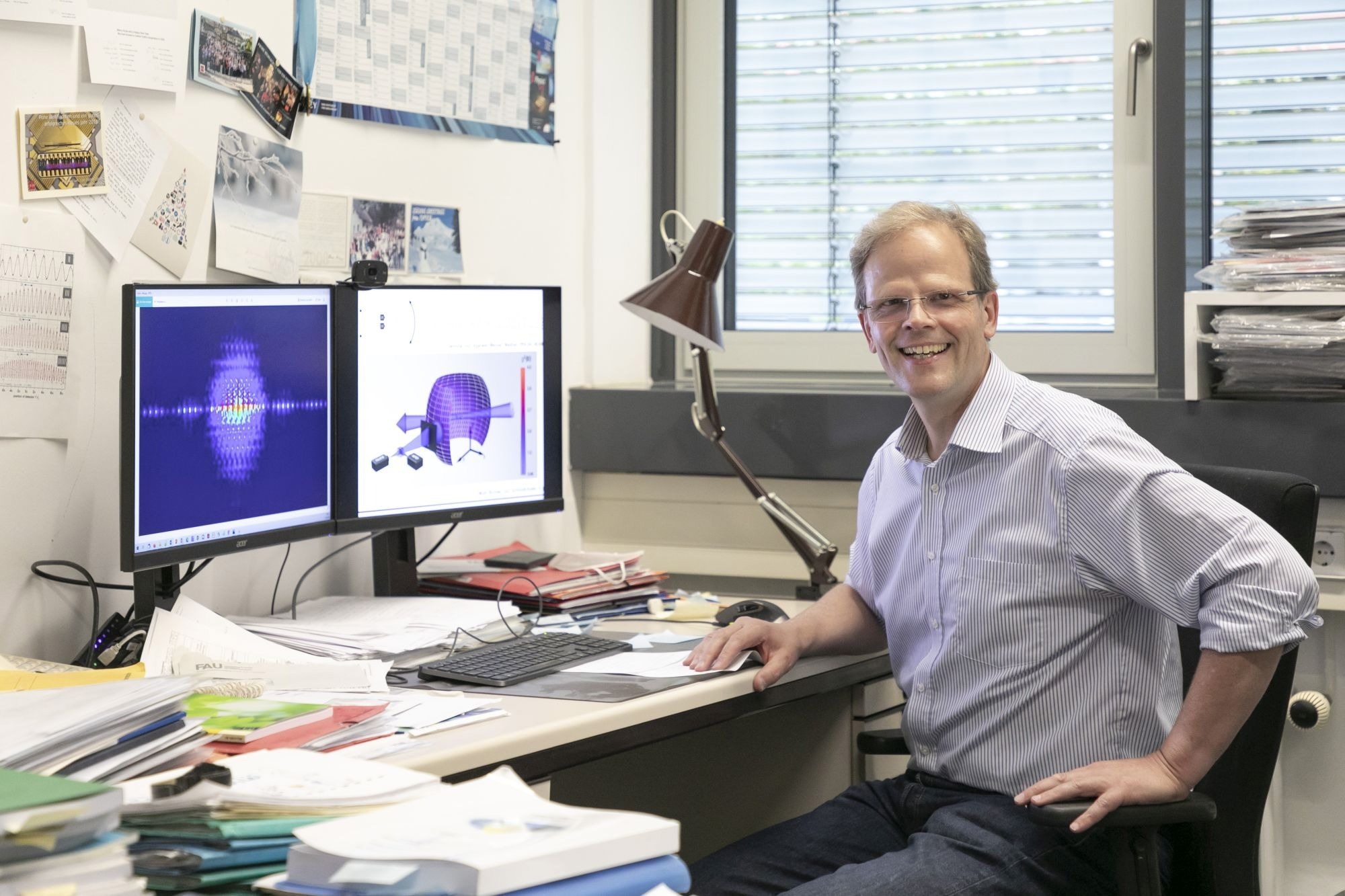A global scientist’s team along with researchers from FAU has, for the first time, employed X-Rays for an imaging method that uses specific quantum features of light. Their study was published in Physical Review Letters and explained how this approach could be employed for imaging non-crystallized macromolecules.
 An international team of researchers including scientists from FAU has, for the first time, used X-Rays for an imaging process that utilizes a particular quantum characteristic of light. Image credit: FAU/Giulia Iannicelli.
An international team of researchers including scientists from FAU has, for the first time, used X-Rays for an imaging process that utilizes a particular quantum characteristic of light. Image credit: FAU/Giulia Iannicelli.
The study group utilized the extremely short and very intensive X-Ray pulses at the X-Ray laser European EXFEL in Hamburg to produce fluorescence photons that reached almost at the same time at the detector—in a time frame of below one femtosecond (one quadrillionth of a second). Producing an image of the light source is possible by quantifying the photon-photon correlations in the fluorescence of the illuminated copper atoms.
On the atomic scale, the materials’ and macromolecules’ structures are normally determined using X-Ray crystallography. Although this technique depends on coherent X-Ray diffraction, the X-Ray light scattering can result in incoherent processes, like fluorescence emissions, which can dominate, despite the fact that they do not lead to a valuable contribution to the diffraction measurement. Rather, they add a background or functionless haze to the measurement data.
In the 1950s, two British astronomers established that it was possible to attain structural data from those self-luminous light sources. In their scenario, it was the light from the stars. Robert Hanbury Brown and Richard Twiss, whose technique is called intensity interferometry, paved a new path to the comprehension of light and discovered the field of quantum optics.
In recent times, researchers from FAU, the Max Planck Institute for the Structure and Dynamics of Matter and the Deutsches Elektronen-Synchrotron (DESY) proposed that intensity interferometry could be adapted for atomic-resolution imaging with the use of X-Ray fluorescence.
The difficulty in expanding this notion to X-Rays is that the coherence time of the photons, which commands the existing time interval to conduct photon-photon correlations, is highly short. It is found by the radiative decay time of the excited atom, which is around 0.6 femtoseconds for copper atoms.
Now, along with scientists from Uppsala University and the European XFEL, the team has won over that difficulty with the use of femtosecond-duration XFEL pulses from that facility to begin X-Ray fluorescence photons within the coherence time. The group produced a source comprising two fluorescing spots in a foil of copper and quantified the fluorescence on a million-pixel detector kept 8 m away.
Just around 5000 photons were sensed on every illumination pulse, and the cumulative sum of more than 58 million pulses generated just a featureless uniform distribution. Nevertheless, when the scientists instead summed photon-photon correlations throughout all images from the detector, a striped pattern appeared, which was examined like a coherent wave field to rebuild a fluorescent source image, comprising two well-separated spots of light.
Now, the researchers hope to integrate this new technique with traditional X-Ray diffraction to image single molecules. Substructures, which are particular to some atoms and even to some chemical states, can be exposed through element-specific fluorescent light. This could add up to an improved comprehension of the functions of vital enzymes like those involved in photosynthesis.
Journal Reference:
Trost, F., Kartik Ayyer, Prasciolu, M., Fleckenstein, H., Barthelmess, M., Oleksandr Yefanov, Jan Lukas Dresselhaus, Li, C., Saša Bajt, Carnis, J., Tamme Wollweber, Mall, A., Shen, Z., et al. (2023). Imaging via Correlation of X-Ray Fluorescence Photons. Physical Review Letters. doi.org/10.1103/physrevlett.130.173201.